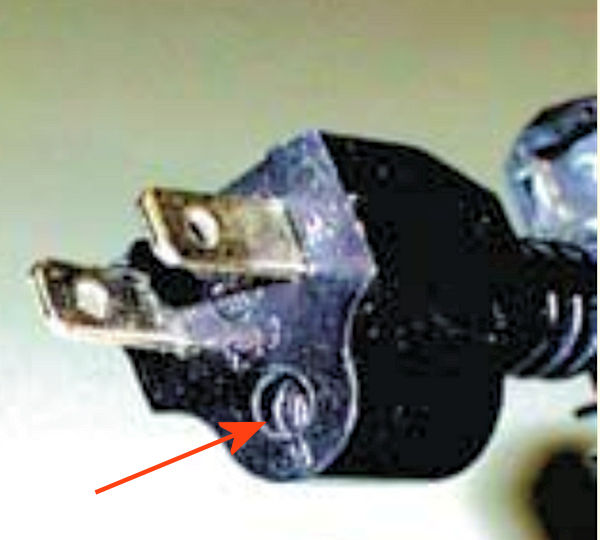Use Proper Wiring and Connectors
Use the following best practices when working with wiring and connectors:
- Avoid overloads - Do not overload circuits.
- Test GFCIs - Test GFCIs monthly using the "test" button.
- Check switches and insulation - Tools and other equipment must operate properly. Make sure that switches and insulating parts are in good condition.

Never use a three-prong grounding plug with the ground plug broken off.
- Use three-prong plugs - Never use a three-prong grounding plug with the third prong broken-off. When using tools that require a third-wire ground, use only three-wire extension cords with three-prong grounding plugs and three-hole electrical out-lets. Never remove the grounding prong from a plug! You could be shocked or expose someone else to a hazard. If you see a cord without a grounding prong in the plug, remove the cord from service immediately.
- Use extension cords properly - If an extension cord must be used, choose one with sufficient ampacity for the tool being used. An undersized cord can overheat and cause a drop in voltage and tool power. Check the tool manufacturer's recommendations for the required wire gauge and cord length. Make sure the insulation is intact. To reduce the risk of damage to a cord's insulation, use cords with insulation marked "S" (hard service) rather than cords marked "SJ" (junior hard service). In damp locations, make sure wires and connectors are waterproof and approved for such locations.
Knowledge Check Choose the best answer for the question.
9-4. What should you do if you see an extension cord with the ground prong missing?
You forgot to answer the question!
